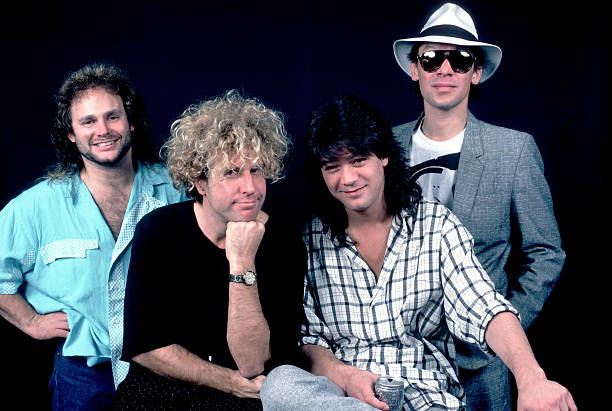In the annals of rock history, few bands have experienced as dynamic an evolution as Van Halen. A recent controversy has emerged between former frontman Sammy Hagar and drummer Alex Van Halen, centering on Alex’s memoir, Brothers, which notably omits the period when Hagar led the band—a phase often referred to as the “Van Hagar” era.

Hagar, who joined Van Halen in 1985 following David Lee Roth’s departure, was instrumental in propelling the band to new commercial heights. Under his tenure, Van Halen released four consecutive No. 1 albums: 5150, OU812, For Unlawful Carnal Knowledge, and Balance. This era was marked by a series of chart-topping hits and sold-out tours, solidifying the band’s status as a dominant force in rock music.
The crux of Hagar’s grievance lies in Alex Van Halen’s decision to conclude his memoir’s narrative in 1985, effectively excluding the subsequent decade that Hagar describes as a period of unparalleled success for the band. Hagar has publicly labeled this omission as “blasphemy,” asserting that it disregards not only his contributions but also the creative achievements of the late Eddie Van Halen during that time.
In response to a fan’s comment suggesting that Van Halen’s legacy ended with Roth’s departure, Hagar retorted, emphasizing the band’s continued success during his years as frontman. He highlighted the millions of records sold and the global tours that defined the “Van Hagar” era, challenging the notion that the band’s vitality diminished post-Roth.
Alex Van Halen, in promoting his memoir, has expressed a preference for the band’s original lineup, describing the early years with Roth as a period of unparalleled creativity and magic. This perspective has been interpreted by some as a dismissal of the band’s later achievements, fueling the current discord between the former bandmates.
The frustration of Sammy Hagar is further compounded by his belief that the omission does a disservice to Eddie Van Halen’s legacy. He contends that the music created during his tenure was a collaborative effort that showcased Eddie’s musicianship and songwriting prowess. By overlooking this era, Hagar argues, Alex fails to honor the full scope of his brother’s contributions to the band’s history.
This public dispute has reignited discussions among fans and music historians about the band’s legacy and the significance of its different eras. While some purists favor the raw energy of the Roth years, others appreciate the polished, mainstream appeal that characterized the Hagar era. The debate underscores the complexities inherent in a band with a multifaceted history and evolving lineup.
Despite the current tensions, Hagar has expressed a desire for reconciliation, emphasizing the importance of resolving differences in honor of Eddie Van Halen’s memory. He has indicated a willingness to engage in dialogue with Alex, hoping to bridge the divide and ensure that the band’s legacy is celebrated in its entirety.
As the narrative unfolds, it serves as a poignant reminder of the personal dynamics that influence artistic collaborations. The legacy of Van Halen is not solely defined by its music but also by the relationships and experiences of its members. Acknowledging and honoring the full spectrum of the band’s history is essential in preserving its place in rock history.
